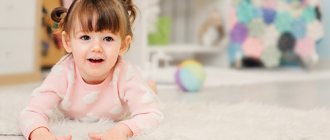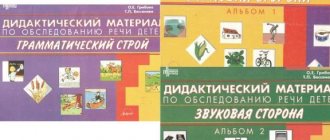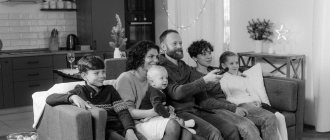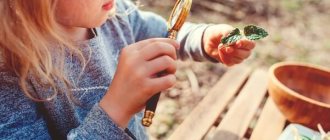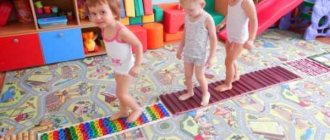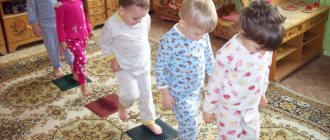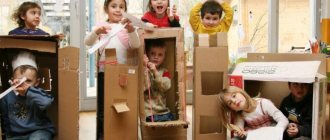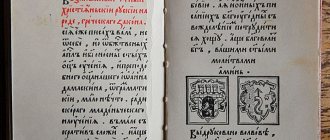Environment and culture
I already understood the essence of the Montessori method, but my girl has grown up, and I simply don’t know what to offer for some new needs. My knowledge began to be lacking, so I took the course “Development and education of a child from 3 to 6 years old.” Below I will show you what I managed to do during training. I will complete the rest of the home activities as new points of interest for the child arise.
Previously, I gave my daughter information chaotically, but during the course I learned the structure of getting to know the world around me. That all ideas need to be materialized in order to be able to interact with objects. That a child after 3 years old needs to be led from simple to complex and from general to specific.
Now my daughter and I talk for a long time, observe and explore so that she can get to know physics, astronomy, biology and geography first-hand:
- We watch the moon, and my girl is always the first to notice the stars in the sky.
- When we wake up in the morning, we look out the window and discuss what the weather is like today.
- We conduct experiments in botany. Once I was doing a material on mathematics, I took 3 cones, and seeds fell out of them. We looked at them together and saw that they had blades like a helicopter. We discussed that they help seeds fly in the wind, and this makes the forest grow. This became the reason for studying the topic of why trees need seeds at all.
- Using the example of a dried rose, we saw where the stem, leaves, thorns are, and where the roots are. We pulled it out, planted spruce seeds in a pot, and now we are waiting for seedlings. I’ll make a sign, I’ll write the days on it and we’ll put a dash if nothing grows or a tick if sprouts appear.
And these are activity ideas for introducing a preschooler to geography: using a globe, we study land and water; using the world map we study continents and biomes (forest, sea, desert, mountains); using cards - national clothes, animals and traditions of different countries.
On the world map I tried to explain that the planet can be imagined as flat, but this is still difficult for a child a little over 3 years old. Now I’m preparing a story about the continents on cards
We have wonderful books about trees and birds (you can even listen to the singing of these birds). If I take these books and read them myself, Yulia joins in, but she doesn’t take them from the shelves. It’s good that she so clearly demonstrates the lack of a point of interest - it helps me choose other activities for development at home.
I recently bought a book about Marc Chagall at the museum. I plan to hold a presentation of cards with reproductions to begin to introduce the child to the history of art and instill taste.
Logorhythmic verses for a 3 year old child
Snowflakes
Whirled, spun (spun in place) White snowflakes. Light fluffs flew up in a white flock (raise your hands). (spin on your toes)
The evil blizzard has calmed down a little - (lower your hands, stand up straight) They settled down everywhere. (sit down, hands to the floor) They sparkled like pearls, (stand up, hands forward) Everyone marvels at the miracle. (spread your arms to the sides)
The White girlfriends sparkled and sparkled (perform the “scissors” movement with your hands). They hurried for a walk (steps in place) Children and old women.
Dance party
Chock-chock, heel! (stomp your feet) The cricket spins in a dance. (spin around) And the grasshopper without a mistake (moves his hands, as when playing the violin) Performs a waltz on the violin.
The butterfly's wings flicker. (we wave our arms like wings) She flutters with the ant. (spin while jumping) Squats in a curtsey (do a curtsy) And again spins in the dance. (spin around)
A spider dances dashingly to the cheerful hopak (dance movements, like in a hopak). Hands clap loudly! (clap your hands) That's it! Our legs are tired! (sit or lean forward, arms hanging down)
Cabbage
We depict the size of the cabbage with our hands, then show how we cut, salt, three and mash the cabbage.
We have cabbage, Big cabbage. We cut the cabbage, cut it, We salt the cabbage, salt it, We grate the cabbage, grate it, We mash the cabbage, mash it.
Speech development
There are a lot of books at home; my child loves to read. She remembers poetry well and even comes up with rhymes herself. I bring nursery rhymes from the garden, so in this regard I allow myself to relax, but I take on sound games and poetry.
Our bookshelf
Music makes a great contribution to the development of speech. It is at this age that children can begin to learn to read music, but through impressions, not logic. For example, tapping the rhythm of melodies, singing nursery rhymes, dancing. We listen to music with a positive attitude together, because it is emotions that are important. After an expressive piece, we always have a calming piece.
Yulia remembers the words and melodies of songs very well and sings great. True, she doesn’t understand all the words in the songs, so I read the lyrics to her separately. Nowadays we often listen and sing songs from Soviet and modern cartoons.
Ideas for activities for developing the speech of a 3-4 year old child, which I practice at home:
- When we pick Yulia up from kindergarten in the evening, we always share the news on the way home.
- We tell each other stories and discuss them. Before going to bed, we always discuss how our day went in the form of a story.
- When we make plans for the weekend, it always happens in the form of dialogue. All family members speak out and ask questions. Then, based on these opinions, a decision is made.
- Tells tales with different plots. Sometimes we do a shadow theater.
- We play an orientation game in the park: who can run faster to a pine, birch, larch, spruce or poplar tree. To complicate it, I said: “Who will run faster to the tree whose name begins with “b”?”
- I realized that now is the time to introduce sound games after my daughter pronounced the sounds U-LI-T-KA. We came up with this game: I put different objects in a box, and she actually correctly guessed the first sound.
I feel that my daughter already needs comparison cards when we talk about fruits, vegetables, wild and domestic animals, and shapes. She knows many words from small books “who lives in the forest”, “in the garden”
We use puzzles to develop logic
And I see the results of how the child’s thinking develops: Yulia has her own opinion, she knows how to express it and defend it, and take another person’s point of view into account. Can listen, makes comments if interrupted.
When the experts talked about the natural interest in writing, it seemed to me that I had already missed the point. But one day we were coloring, and after finishing the work she signed it with the letter “U” for the first time. What inspired me to create the environment.
I’m currently preparing a rough alphabet: I’ve already downloaded the template, selected paper and cardboard. I ordered materials for the mobile alphabet and hung a chalkboard on the refrigerator. We will seize the moment and further develop our speech.
Game 2. Kitten and dog
This game is one of my little students' favorites. We came up with it with 6-year-old children, but children from 3 to 10 years old and even their mothers play it with pleasure. This is one of the favorite games of parents and children on the road, in a queue or other place where they need to keep the baby occupied. Its undoubted advantage is that it does not require any special objects or space, and at the same time it is very interesting for children.
By the way, all games in this section can be played not only in Russian. When children grow up, they can be used to teach a foreign language.
We play this speech game like this.
1. The driver is selected. This is an adult or older child (5 years or more). He plays the role of a dog.
2. All participants in the game fold one palm into a fist. This is a house for a kitten. It doesn’t matter which hand will represent the house - the right or the left.
3. Show the index finger of the other hand. This is a kitten.
4. The kitten is small, he loves to jump. So he jumped onto the house (we put the index finger on the fist). Under the house (place your index finger under the house). Runs around the house (index finger near the fist). Suddenly a dog came running and barked “Woof-woof-woof”. Kitten - jump into the house! (the index finger must be quickly hidden in the fist before the dog grabs it). Dog - the leader tries to catch a kitten or kittens if several people are playing. If the presenter catches the kitten finger, then they change roles in the next game.
5. In the future, the driver’s commands in the game sound like this: to the house, under the house, near the house, into the house. When responding to the command “go to the house,” you must quickly hide your finger.
6. When repeating a speech game, you can deliberately confuse children. My favorite options:
- Speak rhythmically and slowly: na-pod-na-pod-na-pod, etc. many times (the child begins to rhythmically coax - repeat these words and loses vigilance due to monotony), and at this time you need to suddenly, unexpectedly for the child, say - “to the house!”
- Speak the command “to the house” sharply and quickly. The children begin to hide the kittens in the house. “Did I say to the house? There is no dog, the kitten is sitting on the house.” And immediately give the next command very softly and insinuatingly - “Into the house.” The child expects that the command to catch the kittens will be pronounced sharply and quickly, and most often does not have time to escape from the dog or manages to escape at the very last moment. This option teaches the child to focus on the content of words, and not on intonation.
- Alternating different game options is very intriguing for children. They always expect a trick from an adult and therefore listen very carefully to his words and follow his commands, which is what we need!
In this speech game, the child mainly only hears spatial prepositions and does not say them himself. But it must already execute commands correctly, i.e. relate the word and the position of the object. In the future, he can be given the role of leader. But here everything depends on the child’s characteristics: for a 3-year-old slow child, this role is not very suitable, but an active, nimble child will fulfill it with pleasure.
Working with children at home is always a joy for both adults and children. You cannot force a child to study, you need to carefully monitor him and make the games interesting and exciting. How to make activities and games fun for three-year-olds? My experience shows that the golden key to this will be playing games with the child’s favorite characters and favorite fairy tale plots. One kid will be happy to play with an ordinary bunny, another likes dinosaurs, and a third - Smeshariki. Use this key - and you will succeed!
In the third game we move on to the next stage - the active use in speech of the prepositions on, under, in, about.
Mathematics
My daughter understands quantity, knows numbers. We count the apples in the store, the number of people in the family and the days in the week. I have prepared materials for comparing quantities and symbols, and I plan to continue the lessons in the future - I see that the child does it with pleasure.
Grandma also has numbers and round circles on magnets. Recently we came to visit them, I attached the numbers to the refrigerator: to number 1 - one round piece, to number 2 - two round pieces. She put the rest in a bowl, and Julia herself attached them to the numbers.
Using the clock puzzle, the child learned to count and understand that numbers can express quantity and order. In the living room there is a clock with hands, and opposite it there is an electronic clock with numbers. Already going to compare the values, but so far only 12 is unmistakably obtained
Using this set we study the numerical meaning of numbers. Next to each number is the number of items.
Developmental tasks for children 3 years old
You can print out tasks to develop fine motor skills, logic, spatial thinking, perseverance and attentiveness.
Sensory
It makes me happy when I hit a point of interest and the child gets carried away for a long time and tries something. So recently I noticed her craving for construction, and we purchased a magnetic construction set. I spent the whole day building it and couldn’t tear it away.
Developmental activities with sensory materials are very useful from the age of 3 years. They influence fine motor skills and indirectly prepare for writing and mathematics, as well as geometry and creativity. I made several sets with my own hands.
Noise cylinders. I made sound bottles from packages from Imunele - I simply poured beans, buckwheat and semolina into them. It is better to take cereals of different sizes.
Mysterious bag. You need to put objects of different shapes or textures into an opaque bag. The older the child, the less different they should feel to the touch. To complicate the game, you can add a second bag with the same contents. Ask them to find the same objects with different hands.
Paired color cards. A game-exercise on knowledge of colors and all shades. It starts with three basic colors and gradually increases in complexity to seven shades of each color: from the brightest to the palest. I want to get cards from the paint store so I can line up the colors.
We also arrange the chocolate egg fixies according to height. Or while walking in the forest we look for thick and thin trunks.
We have 2 rooms in our apartment: a kitchen-living room and a bedroom. In the living room there is a separate children's bookcase and a shelf for books. I change the materials from time to time, so this is once a creativity zone, once a music and sensory zone, but a set for caring for plants and a jug of water are always in their place. Nearby there is a workplace consisting of a table with a chair and a shelf for books.
Crisis of three years
The three-year crisis is considered the most turbulent in a child’s development, and it is a serious obstacle to regular developmental activities. Negativism, hysterics, stubbornness, ignoring requests, jealousy - you can encounter all this at any time. What to do in this case?
- Change your tactics and ignore the hysteria.
- Give your child more time to recover.
- Provide choice, or the illusion of it.
- Instead of forcing your child, offer help.
- Don't criticize or scold.
If you feel that you cannot cope with yourself and your child, seek the help of child psychologists and early development teachers. Most likely, in an unfamiliar environment the child will begin to behave more calmly. Classes in early development centers are held in small groups of up to 6 people, where children feel comfortable and receive a lot of attention.
Date of publication: 09/24/2018. Last modified: 01/13/2020.
Housework
It's amazing how much children enjoy doing household chores on their own. At home, tables and chairs were washed, laundry could not be done without a child, and vegetables and dishes were washed only in the sink on the assistant’s tower.
It’s even more amazing how ordinary household chores contribute to the development of a 3-4 year old child:
- the child masters specific everyday skills;
- learns to achieve results;
- feels satisfaction and success, self-confidence;
- learns to concentrate;
- refines movements;
- feels independent and self-reliant;
- forms will through choice;
- masters internal algorithms of activity;
- forms the primary everyday logic, which then forms the basis of any other logic;
- the basis is being prepared for a deeper knowledge of writing, creativity, reading and mathematics;
- feels the limits of his capabilities;
- self-control is formed and the level of aggression decreases.
A separate big task was to arrange a home space for this to make it safe and comfortable. At first there was frustration: where to place it. Then inspiration came and decluttering began - what was unnecessary was sold or thrown away, and a place was found for what was needed. It became more comfortable.
There is still a lot to be done, but I am already seeing the fruits and realizing the importance of including my daughter in my life.
We often cook different dishes together.
Porridge in a slow cooker. I put the measured amount of cereal, salt, sugar, milk, and Yulia mixes and turns on the device.
Salads. She washes vegetables herself, learns to peel, cuts with both a wavy and sharp knife, and an apple slicer. Stirs, adds sauces, spices.
Baked goods - pancakes, pancakes, cheesecakes, muffins, pies, pizzas. Kneads the dough, rolls it out, puts it in molds or cuts out figures, and puts in the filling. I bake or fry.
Meat dishes. Beats the meat and sprinkles with spices.
When we cook, we watch videos on YouTube and do it step by step. I want to try to sketch out a recipe together, and then have her cook according to it.
The child has his own shelf in the kitchen. It contains: dishes, cutlery, cutting boards, knives, graters for cooking, a set for washing vegetables and fruits. An apron hangs on the left, and a dustpan and brush hang on the right to sweep away crumbs from the table.
I made several sets to make it easier for the child to learn new skills.
Polishing. First I suggested polishing the wooden elephant. Julia had not yet finished polishing the entire elephant and was not distracted even once, she was so focused. Then I replaced the elephant with a wooden bowl.
Plant care. I moved the only available flower lower so that my daughter could check if it was time to care for it. I trim the dry leaves myself, but she likes to water and wipe the healthy ones. But the main highlight of the set is the watering can.
Flower arrangement. One day, while walking, we picked flowers and blades of grass, collected autumn leaves and made a bouquet using existing bowls, scissors and a jug.
Ironing. I placed everything I needed in the pantry and made a shelf at a level convenient for the child.
Mopping the floor and sweeping up debris, sweeping up dust. I also placed the necessary tools in the pantry.
Washing dishes. If we cook together, then we wash it together under the tap. To do this, I bought a dishwashing brush and a small dispenser, baby dishwashing detergent.
I myself want to take care of the environment with these materials, it turned out so beautifully. I realized how important details and natural materials are. I would never have thought that I would do decoupage and enjoy the process.
Methodology for conducting development classes in junior groups of preschool educational institutions
Since there are developmental goals in every lesson in kindergarten, it is possible to identify, and therefore trace, the general line of implementation of this area of work with children using the daily planning of children’s activities.
Table: example of daily planning in the first junior group (fragment)
| Author | Krasikova O. Yu., teacher of the combined type MBDOU No. 106, Angarsk, Irkutsk region. | ||
| First week of September | |||
| date | Morning | Walk | Evening |
| Monday | Meet the group. During the appointment, pay special attention to children who have a hard time parting with their parents, are capricious and cry for a long time. Outdoor game (F/n) “Fingers say hello.” Goal: development of speech, memory and fine motor skills. Offer the children a game with a dog that barks. Play out a scene with a dog, then sing a song about a dog. Learn to remember the location of toys in a group and put them in their place. | Watching the wind, how the wind blows, trees sway, leaves fall to the ground. P/i "Moth". Goals:
Remote material:
Help children get involved in the game, create a plot for the game “Doll Tanya is coming to visit.” Show how to make Easter cakes for a doll. | Introducing children to the doll corner. Goals:
During meals, ensure that children are seated correctly at the table. Learn correctly, hold a spoon and a mug, eat and drink without spilling. Conversations with parents about the behavior of children at home in order to identify the best experience of family education. |
| Tuesday | Greet children kindly and welcomingly. Pay special attention to children who have a hard time parting with their parents. Teach children to wash their hands before eating, roll up their sleeves, and wipe them dry with a personal towel. Introducing children to the construction corner. | Bird watching. What are they, shape, color, big and small. P/i "On the path." Purpose: to train children in walking in a limited area. Games for assignments (let's collect pebbles from the site). | Introducing children to the book corner. Viewing and reading the fairy tale “Ryaba Hen”. Goal: teach children to listen. Conversations with parents about how the child spent the day. Continue to teach children to remember the location of toys in the group room and put them in their place. |
| Quote from: https://nsportal.ru/detskii-sad/vospitatelnaya-rabota/2016/03/18/kalendarnoe-planirovanie-dlya-detey-rannego-vozrasta | |||
A daily plan helps distribute development tasks between different activities
Table: example of daily planning in the second junior group (fragment)
| Author | Pinchuk L.V., teacher at MBDOU D/s “Rodnichok”, Tambov. | |||||||
| Day of the week | Mode | Joint activities of adults and children, taking into account the integration of educational areas | Organization of a developmental environment for children’s independent activities (activity centers, all group rooms) | |||||
| Group, subgroup | Individual | Educational activities in special moments | ||||||
| Last week of September | ||||||||
| Monday | Morning:
|
Goals:
| Individual task for a child: “Bring a lot of leaves (one leaf).” |
| Didactic games:
Goal: enrich children's vocabulary and sensory experience. | |||
| Organized educational activities | Drawing "Beautiful stairs." Goals:
| |||||||
| Music according to the music director's plan | ||||||||
Preparing for a walk. Walk:
|
|
|
| Children running along paths with fallen leaves, listening to their rustling. Invite children to choose one sheet they like. | ||||
| Work before bed | Developmental game situation “Vegetables, fruits, berries” (using the poem by Y. Tuvim “Vegetables”, the fairy tale by K. Ushinsky “Know how to wait”). Goals:
| |||||||
Evening:
|
| With Polina B., Dima E. - conversation on the toy “Ball”, “Doll”. | Help situation “The mushrooms have scattered.” Goal: to develop interest in the actions of adults, the desire to help. | Looking at pictures on the topic “Where things grow” in a corner of nature. | ||||
| Walk | Labor assignment “Acorns and cones.” Goals:
| |||||||
| Tuesday | Morning:
|
| Didactic game with children “What did Mishutka bring us?” Goal: to consolidate the names of familiar vegetables and fruits. | A game with folk collapsible toys “Collect mushrooms into a basket.” Goals:
| Didactic game “Find and name the vegetables in the picture.” Goal: to consolidate children’s knowledge about vegetables, their shape, size, color. | |||
| Organized educational activities | FEMP "Quantity". Goal: to strengthen children’s ability to distinguish the number of objects using the words one, many, few. | |||||||
| Motor activity according to the plan of the physical education instructor | ||||||||
Preparing for a walk. Walk:
|
| Teach pure sayings with children. | Labor assignment: help adults remove dried plants from a flowerbed or bed, put them in a cart and take them to a certain place. | Didactic game “Weave a wreath.” Goal: learn to make colorful paths from leaves. | ||||
| Work before bed | Hand washing with fun:
| |||||||
Evening:
|
| Individual task for a child: “Take one toy (many toys).” | Children's stories "How we went to the forest." Goals:
| Drawing from a stencil “What grows in the garden?” | ||||
| Walk |
| |||||||
| Quote from: https://infourok.ru/plan-na-kazhdiy-den-vo-vtoroy-mladshey-gruppe-1764067.html | ||||||||
Daily planning helps track the dynamics of development goals
Lesson time plan
For children aged 1.5–4 years, any educational activity lasts 15 minutes. The teacher divides this time into 4 stages of working with the topic:
- Introduction to learning the material, as well as motivating kids and updating the knowledge, skills and abilities that kids already have - up to 2 minutes.
- The stage of presenting new information in conjunction with what children already know, as well as conducting physical education - up to 7 minutes.
- Reinforcement of material in practical tasks - up to 4 minutes.
- The summing up stage, including a positive assessment by the teacher of the activities of all children - up to 2 minutes.
Table: example of a lesson summary “Animals and their young” in the first junior group (fragment)
| Author | Medvetskaya O., teacher of MBDOU D/s "Romashka", town. Ust-Abakan, Republic of Khakassia. |
| Introduction | Children stand in a semicircle, the teacher reads a poem.
|
| Presentation of the material | <… Didactic game “Find the shadow”. Children match the shadow to the animals depicted on the presentation slides. Didactic game “Whose baby?” Children name the baby horse, cow, dog, etc. Finger gymnastics “Puppy”...> <... Didactic game “Who lives where?”. Q: Guys, do you think domestic animals could survive in the forest on their own? (No). Why? (There is no one to look after them). What danger awaits them? (They may be attacked by wild animals.) How does a person care for pets? (Feeds animals, prepares food for them, looks after them, builds houses)…> |
| Consolidation | <… Drawing “Kitten”. V.: Guys, let's draw a kitten. Only we will draw it in an unusual way, using the palm and the “dipping” method: a folded palm is the kitten’s body, fist-head, fingers-ears, eyes, nose, edge of the hand-paw, tail. |
| Summarizing | V.: Our lesson has come to an end. Today we learned a lot of new and interesting things about pets. Animals need to be given affection, care and love. |
| Quote from: https://www.maam.ru/detskijsad/konspekt-razvivayuschego-zanjatija-v-pervoi-mladshei-grupe-domashnie-zhivotnye-i-ih-det-nyshi.html | |
Different types of games are used in development classes: didactic, mobile, finger and theatrical
Table: example of lesson notes “Visiting the cat” in the second junior group (fragment)
| Author | Chekanova N. G., teacher at MBDOU D/s No. 1, Ozyorsk, Chelyabinsk region. |
| Introduction | The teacher invites the children to sit on the chairs, draws the children’s attention to the table, around which there are chairs, and toys sit on the chairs. V.: This is a house in which a cat and kitten live. Today is the little kitten's birthday. They are preparing to receive guests. The cat is setting the table, let's help her. |
| Presentation of the material | Q: What should you put on the table first? Children: Tablecloth. Q: What will we put in the middle and along the edges of the table? Children: Samovar, kettle, cups and saucers...> <... Knock on the door. V.: And here the guests have arrived. (The teacher goes to the door and brings in the duck and duckling). Guys, who is this? Children: Mother duck and little son duckling...> <... V.: It’s the kitten’s birthday, which means there will be a treat: fragrant tea and cookies. And now the animals invite you to play the game “Errands”...> <... V.: And now, guys, the animals will ask you riddles, and you will guess them according to the description. Duckling: It has a bottom and a handle. They drink tea from it. What is this? (Cup). Kitten: He has two arms and a nose. Water for tea is boiled in it, and it is pot-bellied. (Samovar)…> <… V.: And now the children will tell you their riddles. The teacher calls on those who want to ask a riddle. Helps children by whispering in their ears so that no one can hear. Everyone is heard. |
| Consolidation | V.: And now the animals want to play another game with you, “Whose voice is that?” Toys are played out - the voices of animals and their cubs - a rough, thin, soft voice. |
| Summarizing | The teacher thanks the kids for their work. |
| Quote via: https://nsportal.ru/detskiy-sad/razvitie-rechi/2014/10/26/seriya-zanyatiy-dlya-2-mladshey-gruppy | |
Video: lesson on speech development on the topic “Hen and Chicks” in the first junior group
Video: FEMP lesson on the topic “Travel with Kolobok” in the second junior group
Personal care
Hygiene. For easy access to the sink, we placed a stool and hung a faucet extension. A towel, toilet paper, a basin for dirty clothes - everything is at the child’s level. He uses an adult soap dispenser: he presses with one hand, and places the other palm towards the hole from which soap drips.
During training, I reorganized the storage:
- she laid out combs, elastic bands, beads, bracelets and hairpins in different baskets;
- added teeth cleaning supplies;
- My husband and I hung a lower mirror.
Now if there is silence at home, we understand that the child is in the bathroom.
Dressing yourself. I myself really love order and teach my child to do it. My daughter puts her things back in their place, sometimes we have to remind them or do it together. It is clear that her independence and self-confidence are directly related to the fact that the necessary things are always available.
In the hallway I hung hooks for outerwear and a backpack. Opposite on the shelves in the closet I placed a basket with hats and mittens. Underneath it are stored outdoor toys and a bucket with a sponge and cloth for washing shoes. At the entrance there is a shelf with shoes for the weather, the rest is stored in the nightstand, just like ours.
I organized the wardrobe and hallway areas during the course for children under 3 years old, now I’ve just made small changes to make it even more convenient for my daughter. For example, I added the Trugen stool from Ikea. Dressing on it is clearly better than just on the floor or on an adult sofa, where your feet don’t reach the floor. True, now my daughter also uses it as a ladder to climb onto the sofa.
Children's clothes are stored on hangers and in the chest of drawers. I tried to place things so that they were as visible as possible. The chest of drawers is divided into sections to make it easy to maintain order.
Quick games for a 3 year old child
If you need to quickly entertain or distract your child, use these games and questions for your child:
- Show any object (toy, postcard, juice box) and ask to list all the colors that the child sees.
- Draw a simple geometric shape in the air with your finger and have your child guess what you drew.
- Pantomime some activity (cooking, brushing teeth, getting dressed) and let the child guess what it is.
- Ask your child to close his eyes. Ask questions about the color and cut of your clothes, the number of buttons, decorations, testing attention and memory.
- Give your child an epithet (sunny, kind, fluffy), and let him choose a noun for it (day, dad, bunny).
Print educational games and activities for children 3 years old
Plasticine templates
Such plasticine templates are filled with plasticine “sausages” of the corresponding color.
Find and color
Training perseverance and observation is extremely important for three-year-olds. The most interesting “Find and Color” tasks are the best help for this.
Labyrinths
More mazes for kids here.
